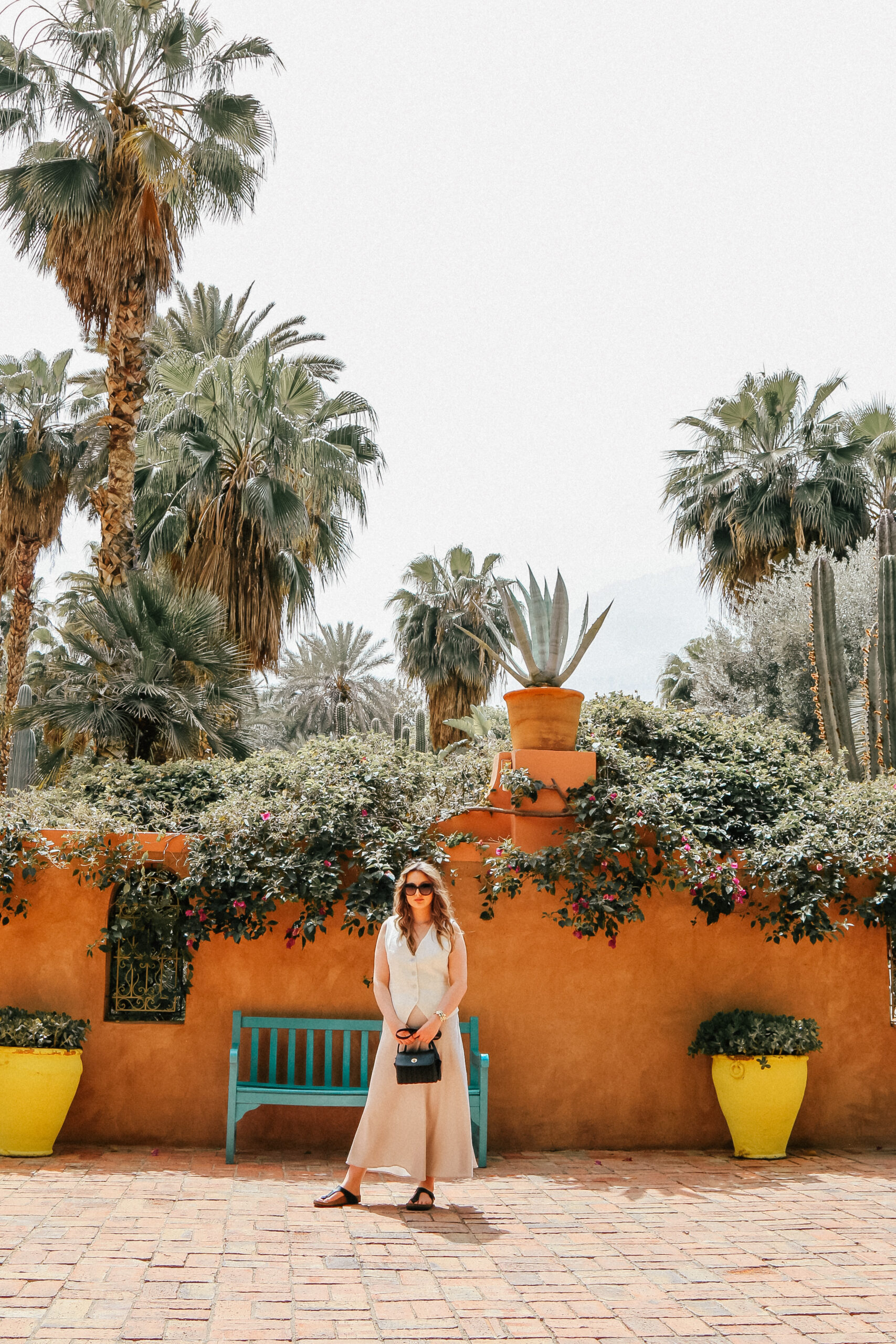After a leisurely few days lounging by the pool at our hotel, soaking in the Moroccan sun and sipping on fresh mint tea, I felt rejuvenated and the vibrant energy of Marrakech was calling for me to explore.
So that’s exactly what I did!
I had a full day planned, wandering through the maze that is the Medina, leaning into the chaos, exploring the souks with elbows brushing against woven baskets, fingers trailing over hammered metal lamps—my mind buzzing from the sensory overload before slipping away for some quiet at Ben Youssef Medersa. But my first stop was Jardin Majorelle. A place that honestly felt like an exhale amidst the hustle and bustle of Moroccan life.
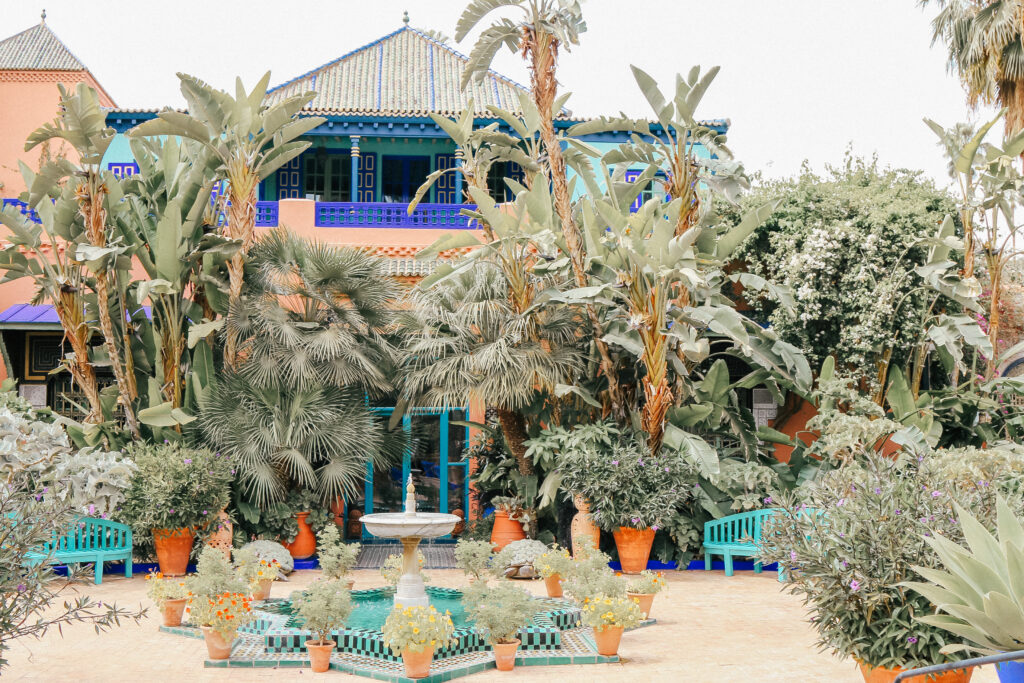
Jardin Majorelle is a name that has surfaced repeatedly in conversations and travel guides. I had seen countless photos of its iconic blue structures, but I always wondered if it could truly be as captivating in person.
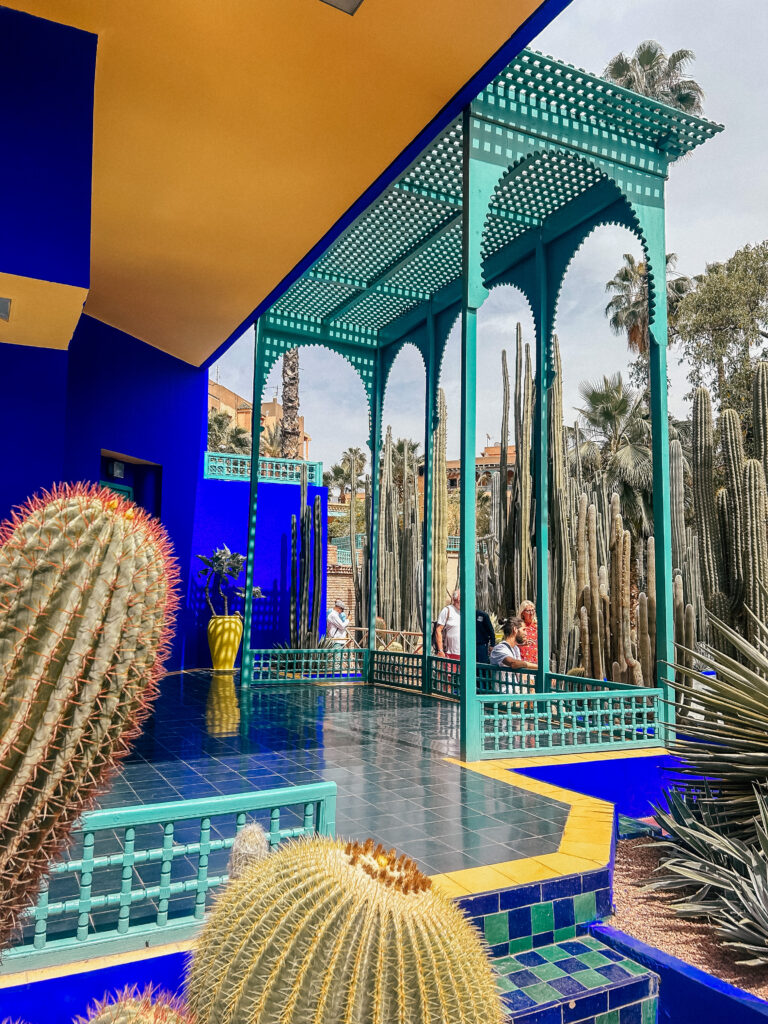
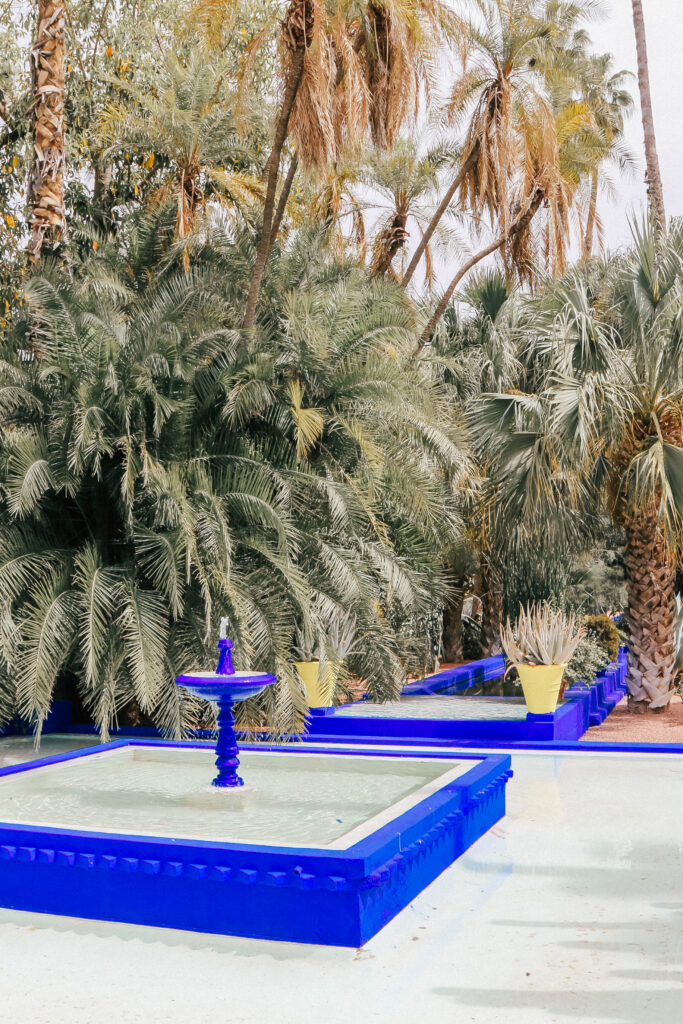
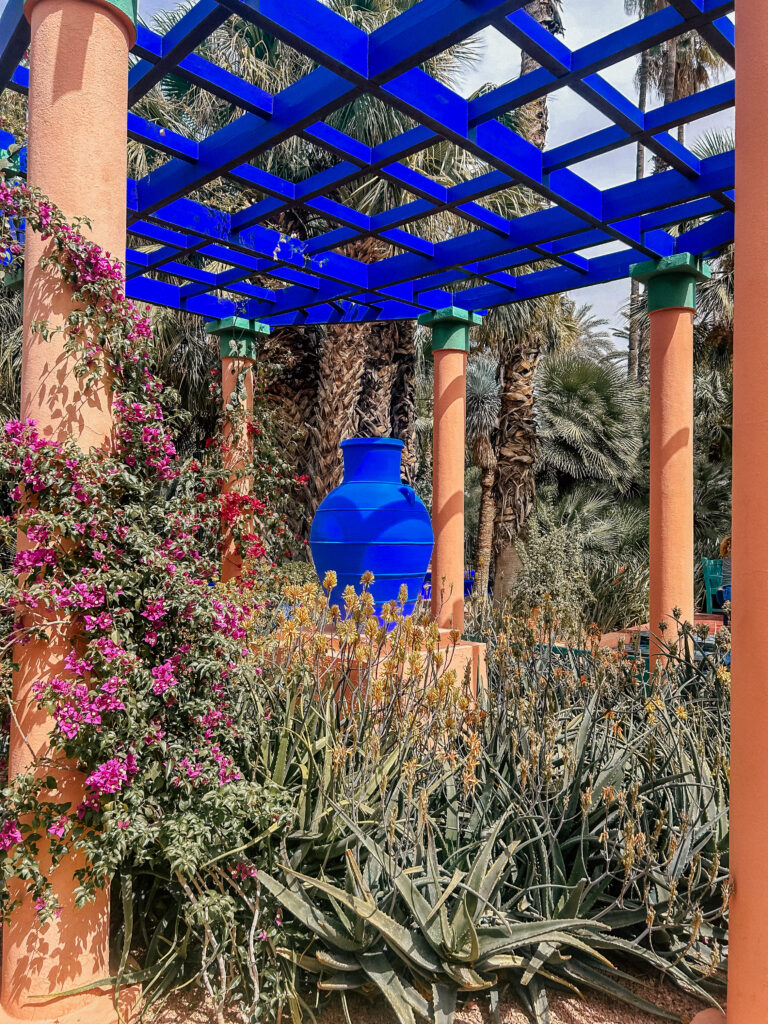
Turns out, it can. As such, Jardin Majorelle is one of the most visited sites in Marrakech, which usually gives me pause, because you never know if it’s popular for a reason or just another Instagram hotspot. But stepping inside, I realised it was very much the former. In real life, those blues are even more vivid. I now understand why it’s called Majorelle Blue. It’s not a shade of blue that hides in the background; it’s unlike anything I’ve seen and bold in a way that holds your gaze.
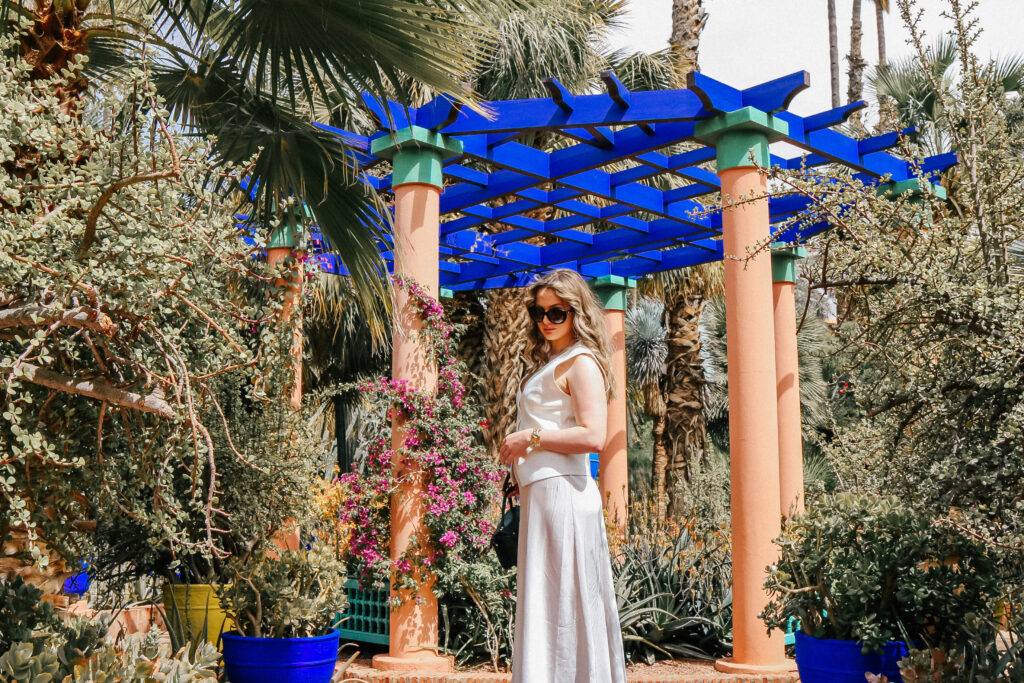
Before it became the iconic tourist destination it is today, Marrakech’s Jardin Majorelle was the brainchild of French painter Jacques Majorelle. In 1923, he settled in Marrakech and began cultivating the garden as a personal sanctuary, experimenting with plant life and architectural details to create an oasis unlike anything else in the city.

After he died in 1962, the garden fell into disrepair. But in the 1980s, it was rediscovered and rescued (from hotel developers) by fashion designer Yves Saint Laurent and his partner Pierre Bergé, who purchased Jardin Majorelle and lovingly restored it to its former glory. The couple spent years transforming it into what it is today: a space that blends artistic expression combined with horticultural beauty, to create a little slice of serenity in an incredibly busy place.
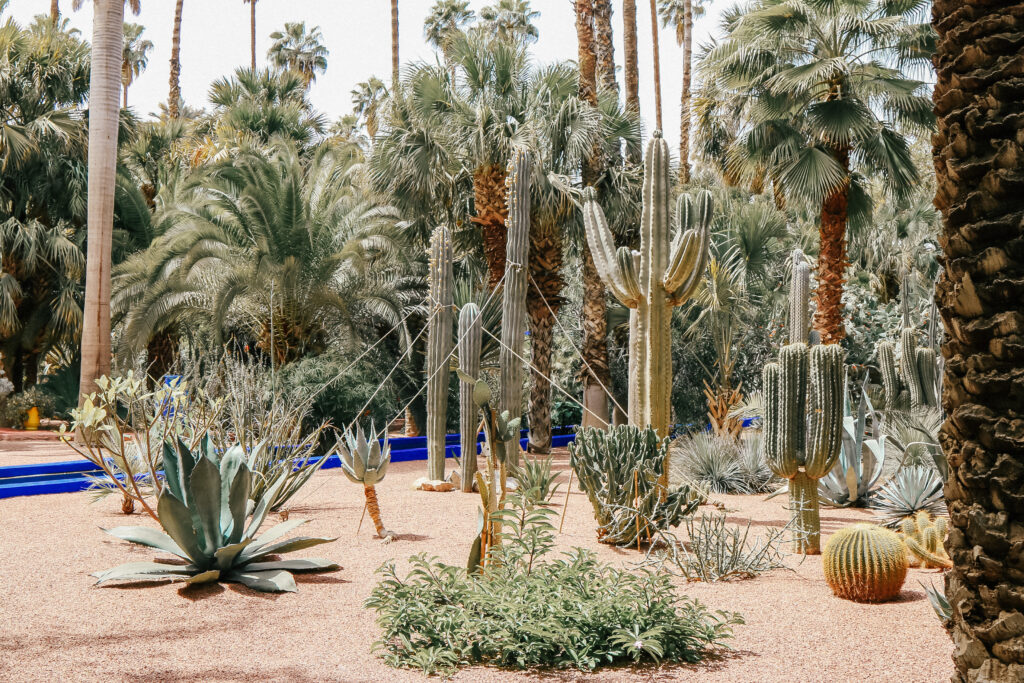
This place held special significance for Saint Laurent. After he died in 2008, his ashes were scattered here, and a memorial was erected in his honour within the gardens. Additionally, the site houses the Berber Museum and the Yves Saint Laurent Museum, offering more layers to explore if you’re not quite ready to return to the busyness of life outside the garden walls.
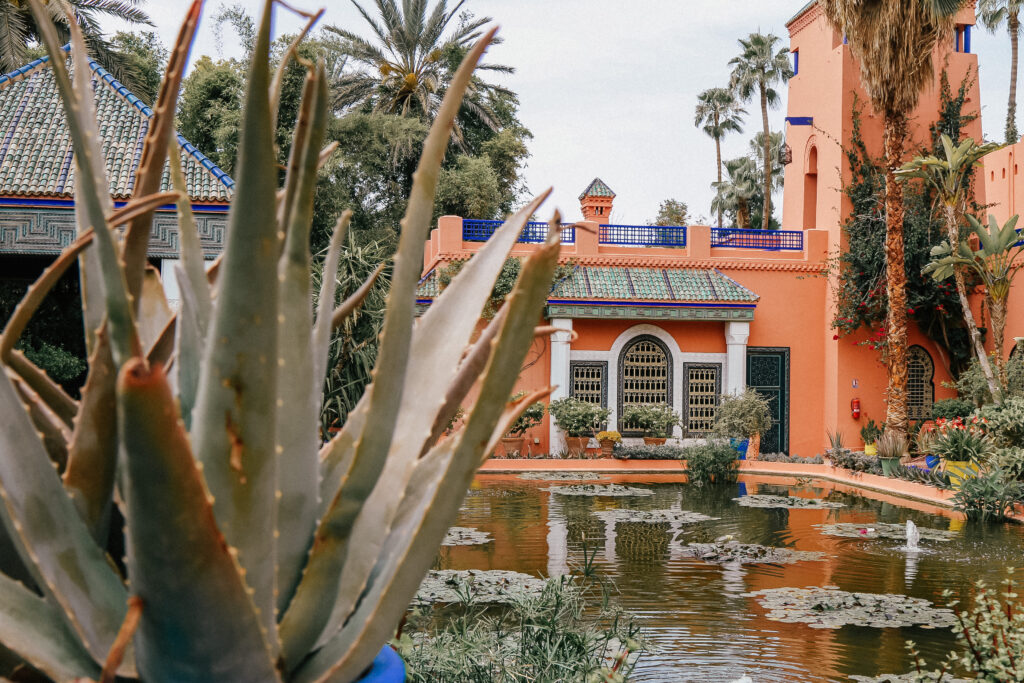
We had purchased our tickets online in advance, a necessity given the garden’s popularity, but even so, a queue awaited us upon arrival. Thankfully, it moved swiftly, and there were misting sprays in place to keep all of us visitors cool—a refreshing respite from the Moroccan sun!
The queue might lead you to assume that the gardens will be packed. But once inside, it’s surprisingly calm. The staff cap ticket entries and foot traffic tends to disperse once you make it past the initial bottleneck near the entrance (there’s a space there that makes for a beautiful photo)
Inside, everything contrasts with the outside world. It feels slower and calmer, and you notice how quiet it is. Not silent, but peaceful. Like the world outside has lowered its volume.

There’s a beautiful sense of order here, but it doesn’t feel rigid. More like guidance. The layout has directions, and a clear flow, but it feels intuitive rather than structured, with winding paths and shaded benches inviting you to pause for a moment and take it all in. The garden wraps around you in rich greens and cool blues. Cacti reach skyward, thick and towering and frogs gather in tiled ponds, adding a not-so-quiet croak to the gentle soundtrack of your walk.

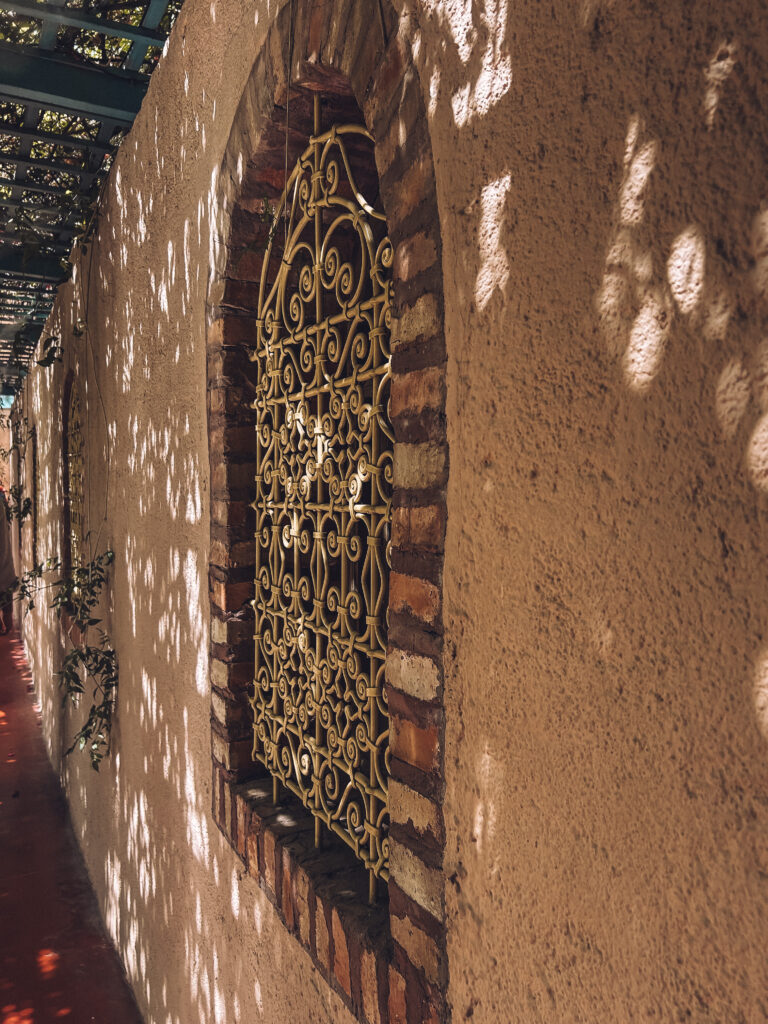

Before we left, I stopped at the café just inside the gardens for a Moroccan mint tea. Originally, we took it outside, but the sun was far too warm, so we retreated indoors to enjoy the air conditioning.
It was delightful to sit in the shade, sipping the sweet, aromatic brew, and simply enjoy the peace. I mentioned in a previous post that I was feeling very burnt out—and this trip had delivered me back to myself with a perfect combination of activity and stillness.
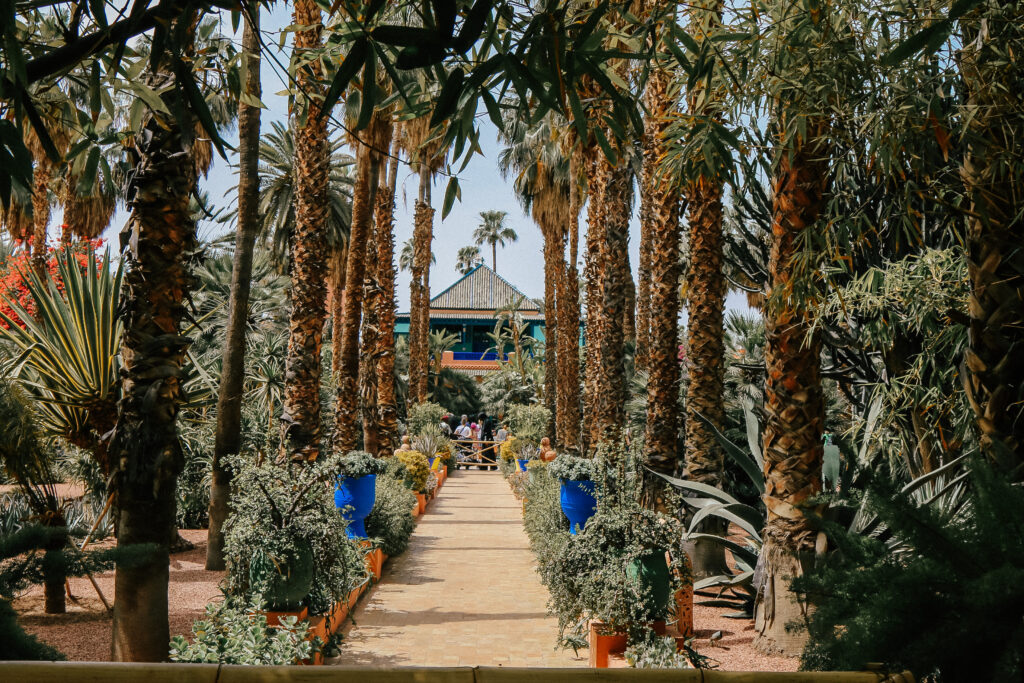
Tips for Visiting Jardin Majorelle
Tickets must be purchased online in advance through the official website and you’ll want to book in advance as entry slots fill up quickly.
Opening hours are daily from 8:00 AM to 6:30 PM. I went during midday, and while it wasn’t too bad, I’d recommend going in the morning or late afternoon. The heat can feel intense, so bring water and wear light clothing, because even with the shade, Marrakech’s sun does not hold back!
Take your time and don’t rush past the details. Jardin Majorelle is a gentle escape in a destination that’s often described as “intense”. The garden itself isn’t massive, but the curation is subtle, so look up, look down and listen carefully. It’s worth it!
